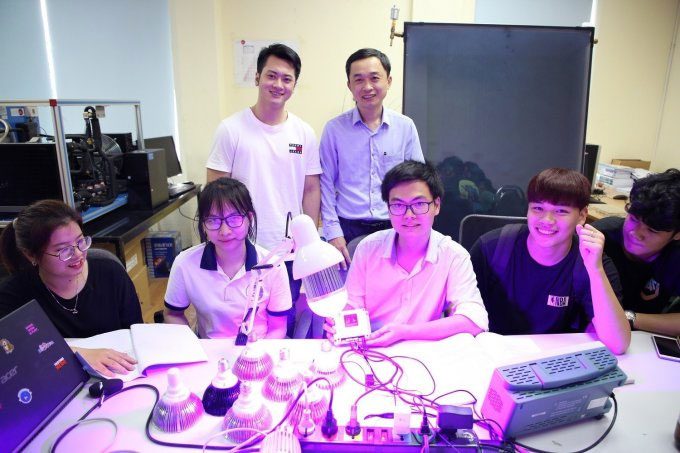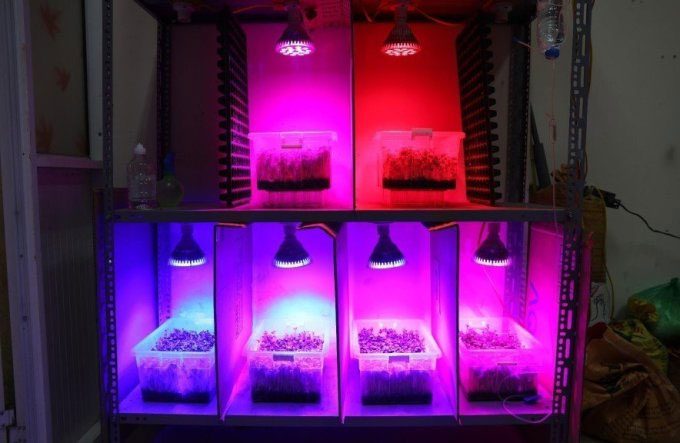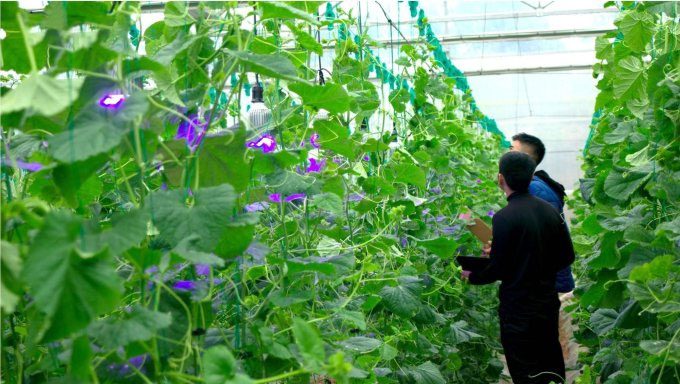The research team from the University of Technology (Vietnam National University, Hanoi) has developed a system that can recognize lighting needs to help sprouts grow rapidly.
In traditional agriculture, growers often use fertilizers or spray growth stimulants to enhance crop development. These methods can lead to chemical residues in plants, soil, and water, causing environmental pollution.
The research team, led by Dr. Bui Dinh Tu, Deputy Head of the Department of Technical Physics and Nanotechnology, has sought an alternative solution. Since 2018, the team has developed a LED lighting system for sprout cultivation. The LED lights are designed based on calculations that allow for the projection of narrow-spectrum light bands and optimal wavelengths for plant absorption.
The team has developed a device that integrates modules for measuring light intensity, air humidity, temperature, and pH levels, which can be displayed and controlled remotely via Internet connections, GSM networks, and more.
The team chose to work with sprouts because, according to Dr. Tu, “these plants have high nutritional content and yield quick research results, typically within one week.”

The research team in the laboratory. (Photo: NVCC).
Initially, the seeds are soaked and sown into trays prepared with growing media. For some types of seeds, lighting can begin as early as the 4th to 6th day after sowing, continuing until harvest time. Therefore, the device is programmed to light based on software designed by the research team, which incorporates parameters for each type of plant.
In trials with white radish sprout seeds, after 7 days, the plants showed good growth with an average height of about 13.5 cm, thick stems, large green leaves, and a high water content of 94.77%.
In comparing yields, the experimental sample produced 910 grams of sprouts per 100 grams of seeds by the 5th day. This figure is nearly double that of sprouts grown using traditional sowing and lighting methods by the 7th day.
Sprouts grown under the LED lighting system can produce approximately 1.63 times more vitamin C compared to those grown under natural lighting conditions.

Smart lighting system with different wavelengths for each type of vegetable. (Photo: Research Team).
Dr. Tu indicated that for white radish, the leaves absorb light best when green LED chips with wavelengths from 460 – 480 nm, red LED chips with wavelengths from 642 – 670 nm, and near UV LED chips with wavelengths around 405 – 417 nm are used. From these parameters, the team integrated data into the lighting system to create suitable lighting formulas for different types of plants.
Research on various cultivated vegetables: green beans, soybeans, black beans, and sprouts from cruciferous vegetables such as white radish, red radish, sweet radish, water spinach sprouts, and sunflower sprouts. After four years of research, the smart lighting system has been perfected. The system can recognize the lighting needs of each plant, adjusting wavelengths and light intensity accordingly.

The system tested lighting with melon plants. (Photo: Research Team).
The LED lighting system for sprouts developed by the research team was awarded a patent for a useful solution by the Intellectual Property Office (Ministry of Science and Technology) in 2022.


















































